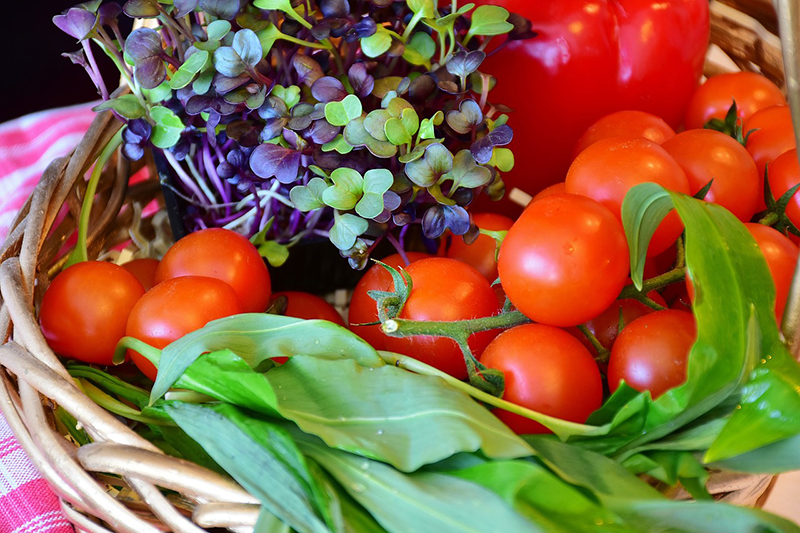
Good Food – Predictions for 2019
by Dr. Tim LaSalle, Adjunct Professor and Co-founder Regenerative Agriculture Initiative

It is too exciting.
What could be too exciting when there are so many doom and gloom challenges that we face today? How can we fix climate change, global soil loss, water stresses of too much or too little, empty calories in our food as it is becoming less and less nutrient dense thereby exacerbating our health issues, and the build-up of chemicals in our environment that is not only affecting our health but that of the whole planet? All of these crucial concerns will affect and put at risk our well-being and especially that of children everywhere.
These huge problems threaten billions of people around the globe. Books are being written about this human-induced global sixth extinction event. As a heart attack serious and overwhelmingly depressing as this all is, what is it that could be “too exciting” that was alluded to in the opening sentence?
What is wonderfully exciting is that there is one single strategy that if taken globally addresses all of these issues for every human and many endangered species. That strategy is investing in the health of the soil and regenerating the soil life. This strategy does not take billions and billions of dollars, it does not take a millennium to geologically and gradually make new soil, and it is available almost universally for little to no cost. It very simply is to invest our time and energy into regenerating the life in our soils. Regenerative Agriculture is the term that most closely describes this strategy, and it is becoming rapidly recognized in conversations, articles, conferences, and new research.
I personally came to an experiential understanding of this regenerative idea while with Howard Buffett’s effort in Africa. He had given me, in his words, “some the best worst soils” he could find. Yes! They were bad. They were very sandy, phosphorus short, with almost no organic matter. I set out to prove to myself and to the smallholder farmers in Africa that we could grow food productively without outside (off-farm) inputs except for purchasing seeds. I simply designed model farms with at least six crops in rotation, a winter cover crop, and I incorporated true no-till. With the help of a friend, a fellow researcher from Ghana whose efforts Howard has invested in, Kofi Boa, I even learned how to grow groundnuts (peanuts) no-till. In comparison to smallholder farmers who were harvesting less than a ton of maize per hectare, these fields within a couple of seasons were yielding five tons of maize per hectare without any visible erosion. The fields were becoming more and more productive, heavy rain events were non-events for these fields, with crop residue mulch the extended dry times had little effect, and insect damage became negligible. (I can’t say the same for warthog crop damage).
Over the years I have met with, read, and learned from Dr. Elaine Ingham, OR(opens in new window); Dr. Kris Nichols, ND(opens in new window); and Dr. Christine Jones, Australia(opens in new window). All began to show me the importance of soil biology, something my college courses never taught me. It appears that a healthy presence of fungi in the soil community is important to maximize photosynthesis efficiency.
Gabe Brown(opens in new window), the farmer, and author of a regenerative agriculture new release, Dirt to Soil, has shown an amazing 11 tons per year per hectare of carbon increase on his property. These robust levels of soil carbon storage are carbon that is living carbon and cycling carbon-carbon that feeds the healthy living soil organisms that rapidly build more soil. It holds more carbon in this cycle than is actually taken out of the atmosphere through the natural process of photosynthesis, thus doing what no other climate change effort is currently doing: potentially drawing down our legacy levels of greenhouse gases.
This work is so exciting and holds so much potential for our collective future that Dr. Cindy Daley of CSU Chico - and I helped create a substantial initiative for regenerative agriculture at the university along with a cadre of faculty, the university president Dr. Gayle Hutchinson, collaborating farmers, and supportive foundations. Our efforts and objectives are to create and replicate farm-scale trials to determine what regenerative practices or combination of practices are most effective and cost-effective, including multispecies cover crops, live roots in the soil at all times, greatly reduced or eliminated chemical applications and no to almost no tillage.
As these research and farmer demonstrations are beginning, we are aggressively seeking to fund a collaborative research effort with Dr. David Montgomery(opens in new window) of the University of WA and author of Dirt: The Erosion of Civilization and Growing a Revolution to look at the correlations between soil health to food nutrient density. Because a healthy soil biome works hard to provide all the nutrients needed by the plant and the plant then trades its sugars by secreting them to these soil collaborators, we have enough preliminary evidence and enough common sense to believe that food nutrient density will be maximized in truly regenerative farming systems.
Regenerative Agriculture is not only the good news and major food trend of 2019; it is the most promising strategy to turn around the planet and atmosphere’s degradation as well as our own health.
Tim LaSalle is quoted on this topic in this article by Stone Pier Press(opens in new window).
